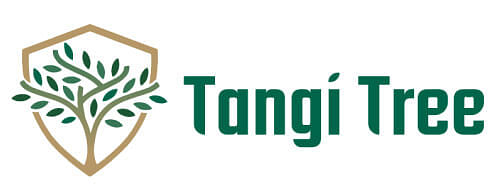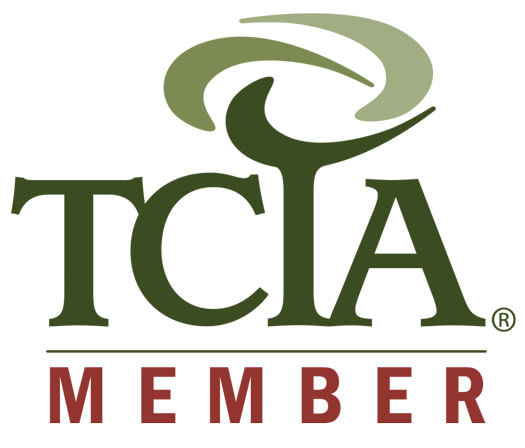Get storm-ready! Be hurricane-prepared BEFORE the season starts.

Who Can Tell Me What’s Wrong with My Tree?
Trees are vital to our environment, providing not only aesthetic beauty but also essential benefits such as oxygen production, shade, and habitat for wildlife. Keeping trees healthy is crucial for sustaining these benefits and ensuring that our surroundings remain green and vibrant. At Tangi Tree, we are dedicated to promoting tree health through expert care and advice. Whether you are a seasoned gardener or a novice tree owner, these insights will help you cultivate a flourishing landscape.
Understanding Tree Health
Understanding what constitutes a healthy tree is the first step in maintaining one. A healthy tree exhibits several key characteristics: a robust and strong trunk, vibrant and well-formed leaves, and an absence of pests and diseases. The trunk should be free from cracks, wounds, or signs of decay, as these can indicate underlying issues that may compromise the tree's stability. Leaves are often the most visible indicators of tree health; they should be a rich green color, appropriately sized for the species, and free from spots, holes, or discoloration. Additionally, a healthy tree should not be infested with pests or show signs of disease, such as unusual growths, sap oozing, or significant leaf loss. By regularly monitoring these aspects, you can quickly identify and address any health concerns, ensuring your trees remain robust and beautiful.
Choosing the Right Tree for Your Environment
Selecting the right tree species for your environment is a critical step in ensuring long-term tree health. Different tree species have varying requirements in terms of climate, soil type, sunlight, and water availability. It's important to research and choose a tree that is well-suited to the specific conditions of your location. For instance, some trees thrive in well-drained soil and full sunlight, while others prefer shaded areas and moist soil. Additionally, consider the mature size of the tree to ensure it has enough space to grow without interfering with structures or other plants.
Proper Planting Techniques
Planting a tree correctly is foundational to its future health and stability. The location of planting should be carefully selected to provide adequate space for root expansion and canopy growth. When digging the hole, ensure it is twice as wide but no deeper than the root ball to encourage root spread. It's crucial to plant the tree at the right depth; planting too deep can suffocate roots, while planting too shallow can expose them to damage. After placing the tree in the hole, backfill with the original soil and gently tamp it down to remove air pockets. Water the tree thoroughly after planting to help settle the soil and establish good root-to-soil contact. Applying a layer of mulch around the base of the tree, but not touching the trunk, can help retain moisture, regulate soil temperature, and reduce weed competition. Proper planting techniques set the stage for robust growth and long-term tree health.
Watering Guidelines
Proper watering is essential for the health and growth of trees, and the needs vary between young and mature trees. Young trees require more frequent watering to establish their root systems, typically needing deep watering weekly during the growing season. This involves soaking the soil to a depth of about 12 inches to encourage roots to grow deeper into the ground, making the tree more resilient. Mature trees, on the other hand, usually have established roots and may only need watering during dry spells. It's important to avoid shallow watering, as this encourages surface roots that can lead to instability and poor health. Instead, deep and less frequent watering is preferred. Be mindful of signs of overwatering, such as yellowing leaves and fungal growth, as well as signs of underwatering, like wilting and browning edges on leaves. Adjusting your watering practices to the specific needs of your trees and local weather conditions will help keep them healthy and thriving.
Mulching and Soil Health
Mulching is a simple yet highly effective practice that can significantly improve tree health. By applying a layer of mulch around the base of a tree, you can help retain soil moisture, regulate soil temperature, and suppress weed growth. Organic mulches, such as wood chips, bark, or compost, are particularly beneficial as they decompose over time, adding valuable nutrients to the soil and improving its structure. When mulching, it's important to apply a layer that is 2 to 4 inches thick and to keep the mulch a few inches away from the trunk to prevent rot and pest infestation. Additionally, maintaining good soil health is crucial for tree vitality. This can be achieved by regularly aerating the soil to improve root oxygenation and adding organic matter to enhance soil fertility and structure. Healthy soil supports robust root systems, which in turn support strong and healthy trees.
Pruning and Trimming
Regular pruning and trimming are vital for maintaining tree health and safety. Proper pruning helps to remove dead, diseased, or damaged branches, which can otherwise become entry points for pests and diseases. It also promotes better air circulation and light penetration within the canopy, encouraging healthy growth. The best time to prune trees depends on the species and the desired outcomes, but generally, late winter or early spring is ideal before the new growth starts. When pruning, it’s important to use the correct techniques to avoid harming the tree. Make clean cuts just outside the branch collar and avoid removing too much foliage at once, as this can stress the tree. Shaping the tree through careful trimming can also help prevent structural issues and improve its aesthetic appeal. Regular pruning not only keeps your trees healthy but also enhances their beauty and safety in your landscape.
Fertilization and Nutrient Management
Fertilization plays a crucial role in supplying trees with the essential nutrients they need for growth and resilience. While many established trees may not require frequent fertilization, younger trees and those in nutrient-poor soils can benefit significantly from it. The best time to fertilize is during the growing season, typically in early spring, when trees can most effectively use the added nutrients. Using a balanced, slow-release fertilizer ensures a steady supply of nutrients over time. Signs that a tree may need fertilization include poor growth, pale leaves, and reduced vigor. It's important to follow recommended application rates and methods to avoid over-fertilization, which can damage roots and cause nutrient imbalances. By providing the right nutrients, you can support robust growth, enhance resistance to pests and diseases, and promote overall tree health. Effective nutrient management is a key component of comprehensive tree care, ensuring your trees remain strong and vibrant.
Pest and Disease Management
Effective pest and disease management is crucial for maintaining the health and longevity of your trees. Trees are susceptible to a variety of pests and diseases, which can cause significant damage if not addressed promptly. Regular inspections are essential for early detection. Look for signs such as discolored leaves, unusual growths, oozing sap, or the presence of insects. Preventative measures, such as selecting disease-resistant tree species, maintaining proper sanitation by removing fallen leaves and debris, and avoiding injuries to the tree, can greatly reduce the risk of infestations. If pests or diseases are detected, it’s important to identify the specific issue accurately. Depending on the severity, treatments can range from natural remedies like neem oil and beneficial insects to chemical treatments. Consulting with a professional arborist can provide you with tailored solutions and ensure that the treatments used are safe and effective.
Seasonal Tree Care Tips
Each season brings unique challenges and requirements for tree care, making seasonal maintenance essential for tree health. In spring, focus on inspecting trees for any winter damage and begin routine fertilization and pruning. This is also the time to monitor new growth and address any early signs of pests or diseases. Summer care involves ensuring adequate watering, especially during hot and dry periods, and continuing to monitor for pests. Applying mulch can help retain soil moisture and regulate temperature. In fall, prepare trees for the coming winter by reducing watering as temperatures drop, applying a final layer of mulch, and checking for any structural weaknesses that might need addressing before winter storms. Winter care includes protecting young trees from frost damage by wrapping trunks and removing heavy snow from branches to prevent breakage. Regularly checking trees during the winter months can help catch any issues early.
Professional Tree Care Services
While many aspects of tree care can be managed by homeowners, there are times when seeking professional help is essential. Professional tree care services offer expertise and advanced techniques that ensure the health and safety of your trees. Arborists can provide comprehensive inspections to identify potential issues that might not be visible to the untrained eye. They are skilled in advanced pruning techniques, disease diagnosis, and treatment, as well as pest management, which can significantly improve tree health and longevity. Additionally, professionals can handle large-scale tasks such as tree removal, cabling, and bracing, which are critical for preventing property damage and ensuring safety. Tangi Tree offers a wide range of professional tree care services, including routine maintenance, emergency care, and specialized treatments.
Tangi Tree Keeps Your Trees Healthy Year-Round
Maintaining healthy trees is a rewarding endeavor that enhances the beauty and functionality of your landscape. By following the tips outlined in this blog, you can ensure your trees thrive for years to come. However, when it comes to complex tree care needs, professional assistance is invaluable. Tangi Tree is here to help with expert services tailored to your specific requirements. Contact us today to schedule a consultation and discover how we can support the health and vitality of your trees.






